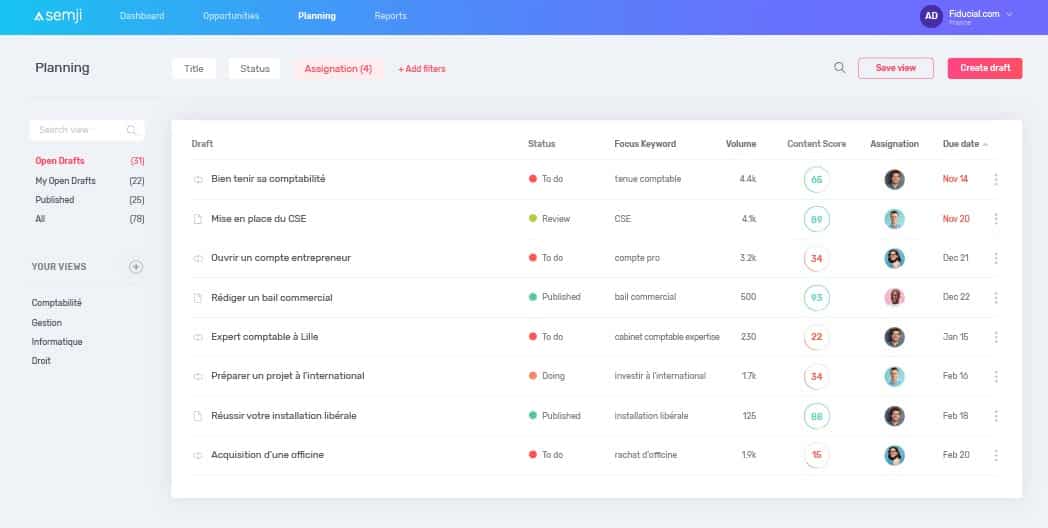Content is becoming an increasingly important part of marketing strategies. Semji – a content optimization platform and SEO specialist – together with YouLoveWords – a content marketing leader – share with you the main trends in content marketing and SEO. Over 100 decision-makers have been interviewed, from different industries and profiles, the study provides a comprehensive overview of SEO and Content experts working on these topics every day. Now, let’s have a look at it and find out where you stand!
How essential is SEO to content marketing?
According to an article published by Ahrefs based on 63 SEO statistics in 2020, 53.3% of all website traffic comes from organic search. The study also shows that 92.96% of all traffic comes from Google, Google image, and Google Maps. As you can see, Google still holds the monopoly and sets the rules for online visibility. Today, content is the search engine’s fuel! The objective is to provide users with the most relevant answer to their query. This has been further implemented with the arrival of the RankBrain algorithm, aiming to better decipher users’ search queries. Today, with the display of featured snippets, knowledge graphs, AAP blocks… Google is evolving towards AEO and is no longer only a search engine but rather an answer engine.
If SEO beats to the rhythm of Google’s algorithms and still remains an ever-changing field, what’s for sure is that content is more than ever a performance and website visibility driver. In the current context where advertisers need to create a link with their audience (cf. Testimonials of Decathlon, La Vie Claire, Uni-médias, Packdiscount on the impact of the Coronavirus on their digital strategy), becoming THE answer will be the key elements of an efficient, profitable and sustainable SEO strategy!
Here are the 10 Content Marketing and SEO challenges covered in the study:
- the objectives of SEO content production,
- production speed,
- how to organize of internal teams,
- outsourcing content production,
- SEO training for editorial teams,
- Investments dedicated to Content Marketing / SEO,
- where does editorial stand within content production,
- the most used content writing tools,
- the main difficulties encountered in implementing a content strategy,
- Measuring ROI of content marketing initiatives.
5 key figures from the 2020 Content and SEO study
Over the years, content production has become an important marketing acquisition tool. Profitability being key, it is important to assess the real advantages and benefits from a good content strategy. Increased visibility, improved SEO traffic, increased authority and credibility with Google and Internet users, audience loyalty… Acquisition and retention strategies are impacted. In today’s world, it is inconceivable to create content that does not generate any results for your business. And yet, this is a statistic that we often stress at Semji: 91% of web content does not generate organic traffic and, ultimately, revenue (Ahrefs).
But then, how do you get visible and SEO-optimized content?
Here are the 10 steps to follow when writing content to ensure it’s relevant for your audience and SEO-performant:
Content creation: a powerful customer acquisition and conversion tool for 40% of companies.
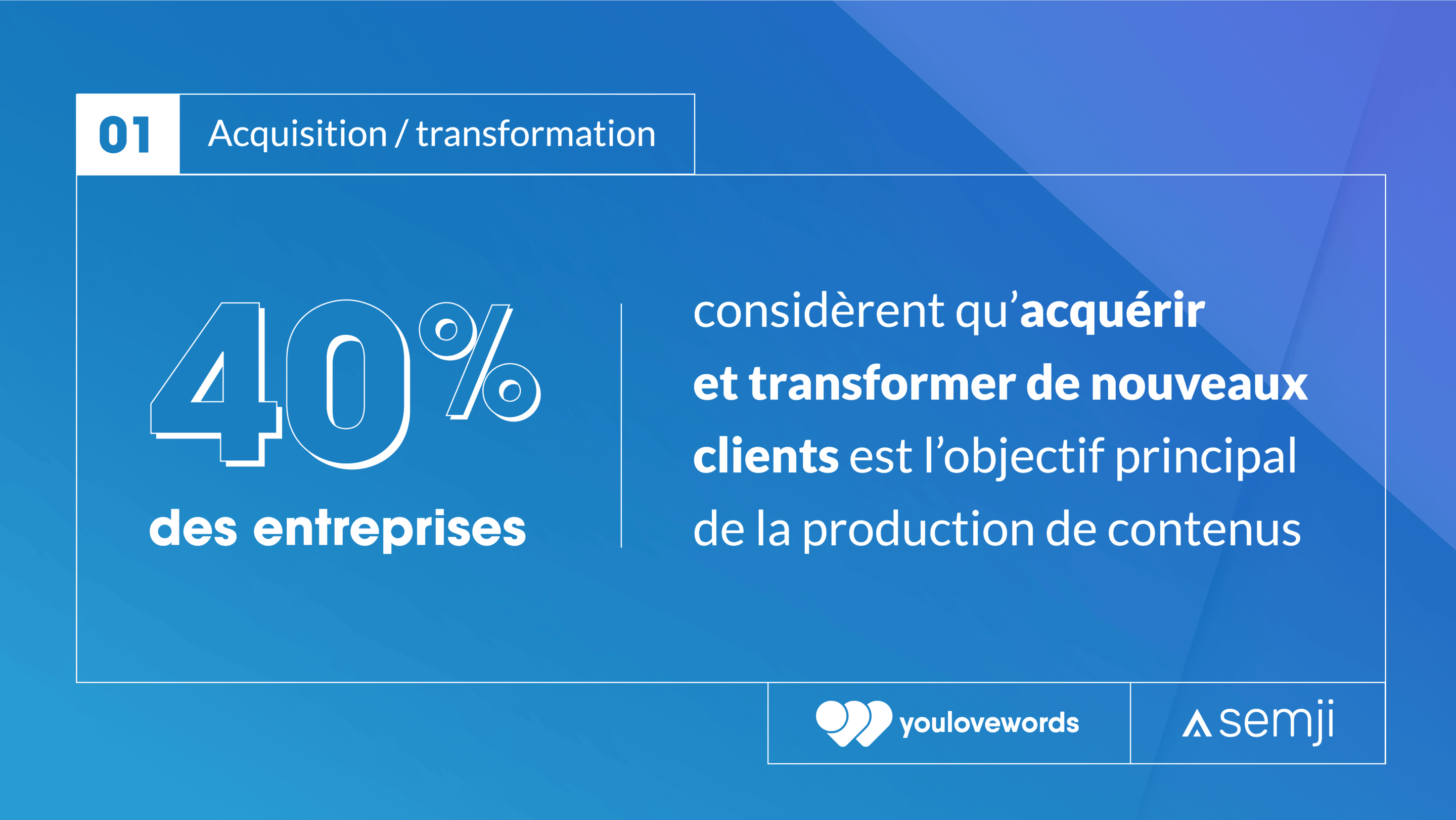
Over the years, content production has become an important marketing acquisition issue. Profitability being the key, it is important to evaluate the real advantages and benefits that a good content strategy can bring.
Increased visibility, improved SEO traffic, development of authority, gain of credibility with Google and Internet users, audience loyalty… Acquisition and retention strategies are impacted. It is therefore inconceivable today to create content that does not generate any results for your business. And yet, this is a statistic that we often put forward at Semji: 91% of web content does not generate organic traffic and, ultimately, revenue (Ahrefs).
But then, how do you get visible and SEO-optimized content?
Here are the 10 steps to follow when writing content to ensure its relevance to your audience and its SEO performance:
By following these steps, 80% of the content created with Semji Platform generates organic traffic and helps you acquire new customers.
75% of companies entrust their content to a team of in-house writers.
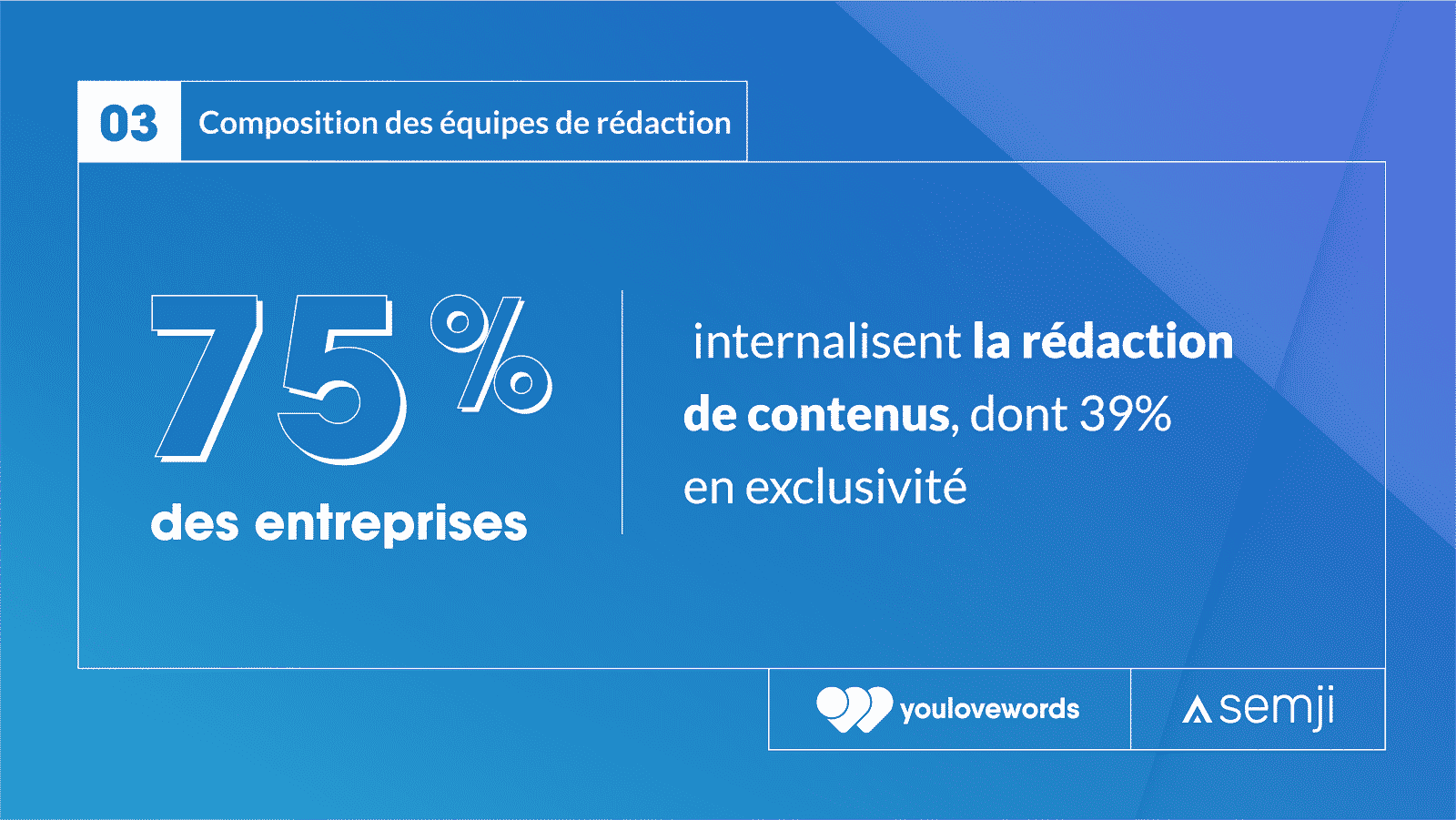
As content is an increasingly important pillar, companies are organizing themselves accordingly. 75% have in-house writers for content production. 36% use external editorial support (content agencies, freelancers…) to meet the deadlines of their editorial schedule.
The proper implementation of an editorial schedule is key for editorial teams, it is both an organizational and follow-up tool. Unfortunately, updating this schedule via a spreadsheet or another tool is tedious and time-consuming. Semji Platform’s schedule module allows you to have both a global and detailed vision of your production chain. You can collaborate as a team by prioritizing the contents to be produced for each writer, and you can ensure the quality of each publication thanks to the Content Score.
The study shows that only 18% of companies outsource their entire writing process. Beyond keeping the production process in-house, companies also want to bring their own expertise while optimizing the SEO quality of the content produced. This approach meets the E.A.T (Expertise, Authority, Trust) criteria required by Google. The more you prove your level of expertise in dealing with a subject or a request made by web users, the more you bring trust to your content and reinforce the authority of your site with the search engine.
The interest in content comes from copywriting and the subject. SEO optimization for writers can be a headache, the search for relevant keywords is long and tedious… It is a full job in itself! Using a tool to identify keywords on which to position yourself can be a real advantage. This is what Hamidou Diallo, SEO Manager at Uni-medias emphasizes “Semji Platform does not replace their expertise, it makes it more visible and enhances it in the eyes of online users and Google. ”
Editorial is the most popular content format for 81% of companies.

This is a statistic that may seem surprising, as there are so many different formats that exist for content: articles, videos, podcasts, live sessions, etc. However, 81% of companies still consider editorial content to be the most popular format. Unlike video/audio/podcasts, articles are “quick wins”. They require less technical knowledge and less investment to achieve good SEO visibility on Google.
However, if this SEO work is not well organized, this format can quickly become time-consuming. SEO is like any other activity, in order to be efficient you have to focus on the tasks that produce the most and prioritize them.
With Semji, before starting any SEO optimization, the platform suggests keyword ideas and relevant questions on the topic of the chosen generic keyword. The prioritization of suggestions is defined according to search volume, helping you discover new SEO opportunities and allocate writers on high-performance content only.
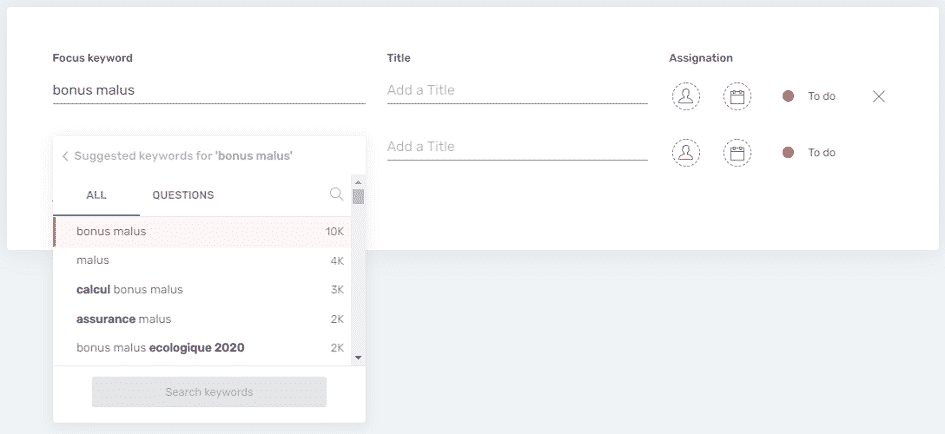
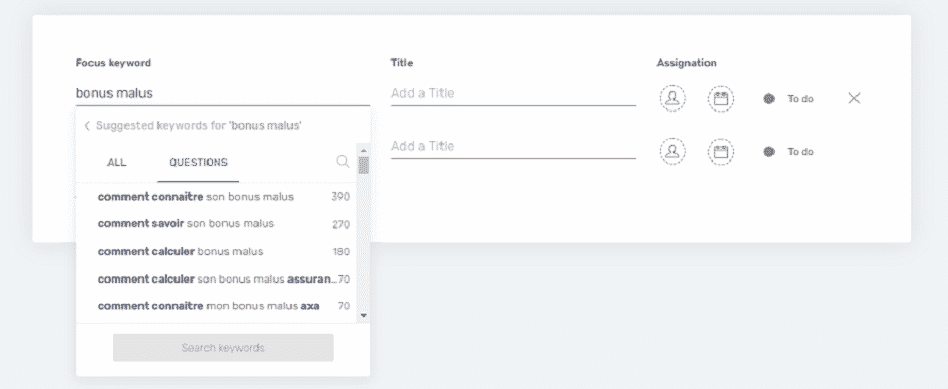
Demand for automated writing assistance is increasing.
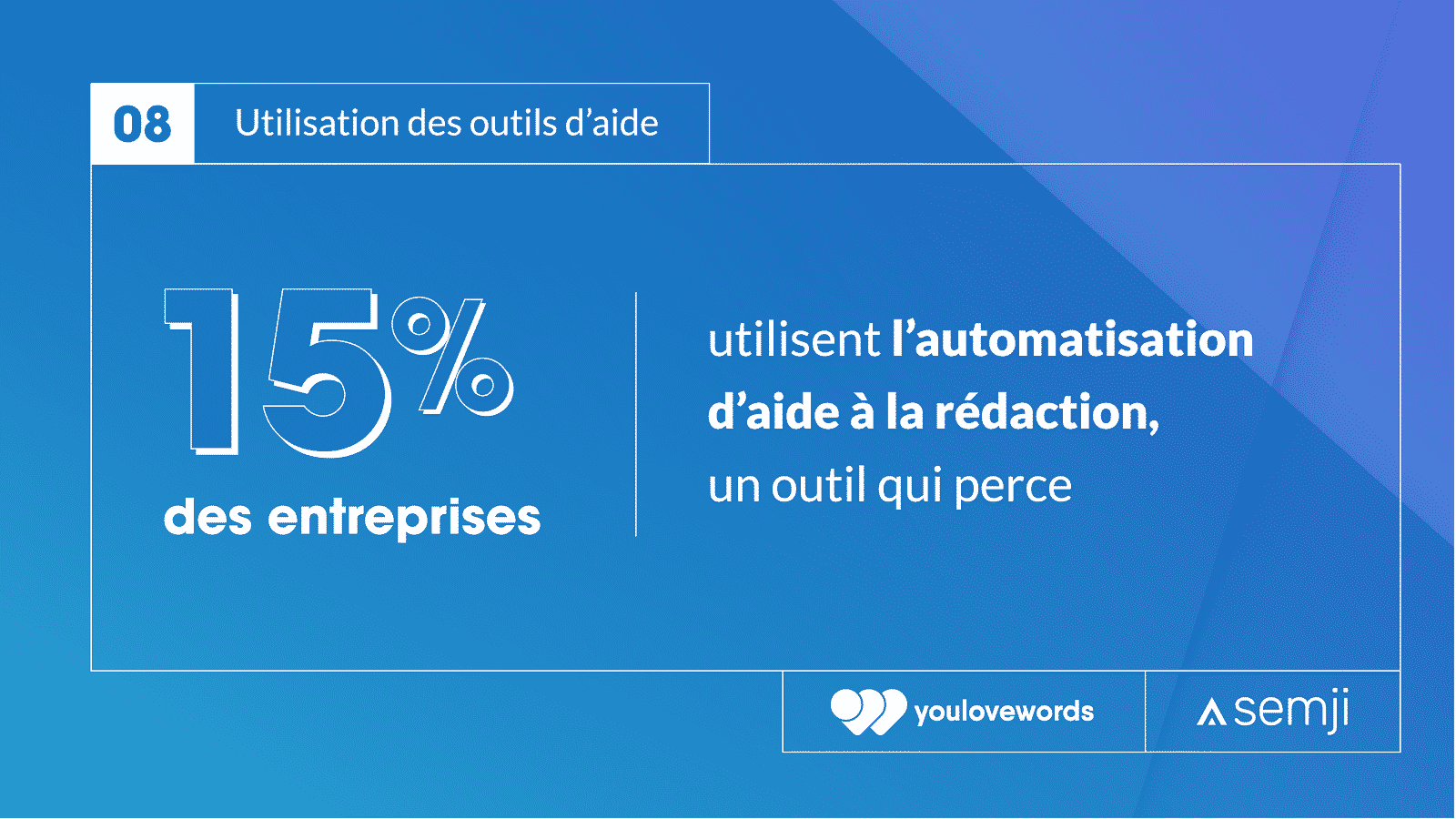
Three-quarters of respondents do not use any automation tools to help them write their content.
The reasons can be multiple: budget issues, reluctance to add a new process into an already well-functioning editorial team, fear of losing the “editorial tone” by using artificial intelligence…
We heard your concerns. That’s why, when we developed our solution internally, we thought for the users. Semji is not here to replace your expertise for the sake of SEO. The platform enhances your expertise in the eyes of users and Google.
For each content created or optimized and according to the targeted keyword, Semji Platform gives advanced SEO recommendations to :
- define a striking and distinctive perspective,
- an in-depth approach on a topic to outperform your competitors,
- quickly structure a content plan and address topics expected by your audience
- build a real topic cluster to increase your website’s authority.
As your writers discover Semji‘s recommendations, they’ll learn more about the expectations of online users and the strengths and weaknesses of competing content. All they have to do is use their expertise to make a difference!
The main issue is measuring content performance.
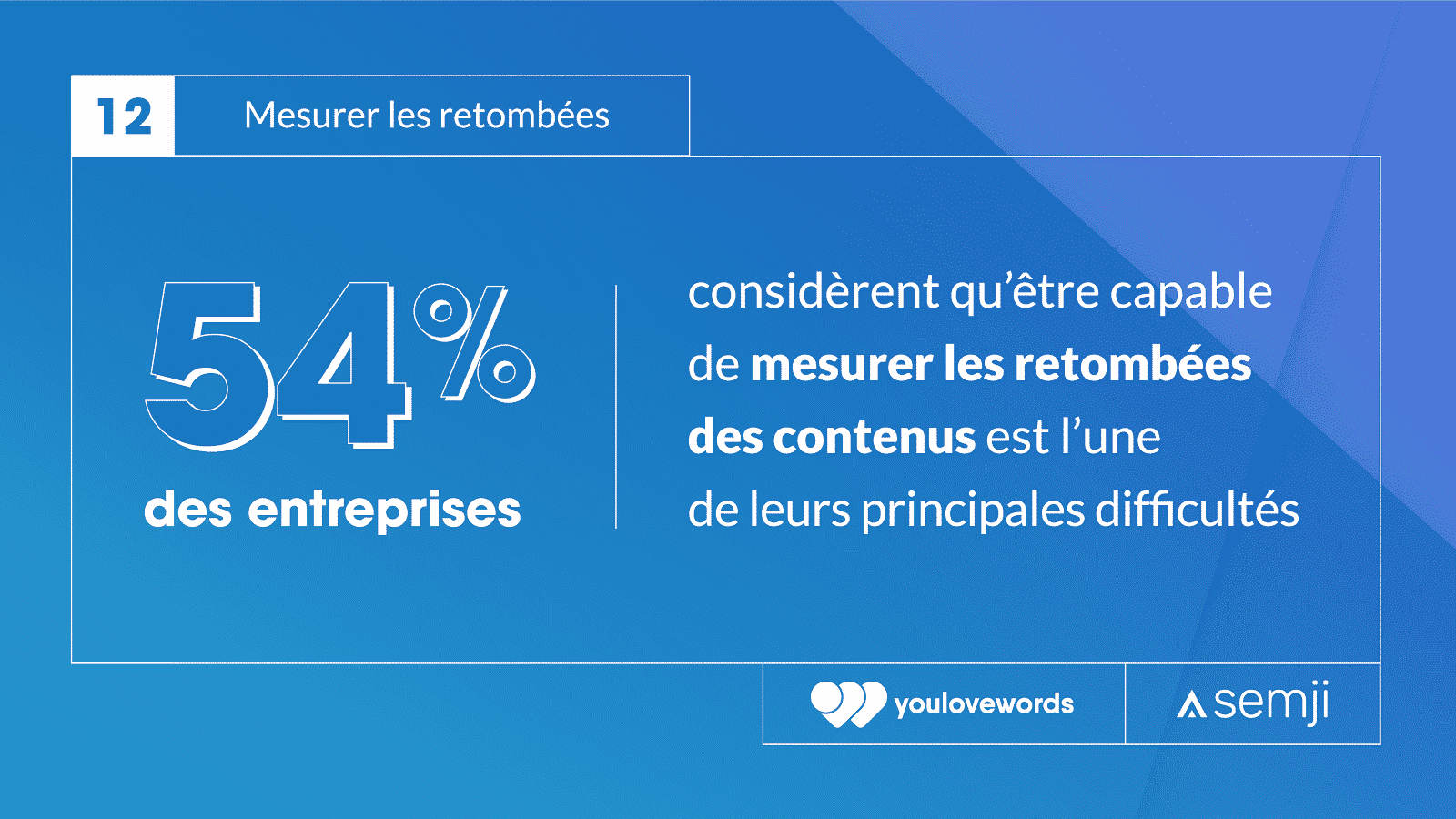
Measuring content performance is a real issue for 54% of editorial teams. Yet it seems unimaginable to not track the ROI of your actions or not define performance indicators. Quantifying the impact of your strategy is effectively the same as justifying the human/budget investment, estimating the productivity of your teams and helping you make decisions.
After the SEO optimization of a website’s content, performance curves can be difficult to read, especially for companies that have a hard time reading data. Search Console or Google Analytics are essential tools but they can also be difficult to use and understand.
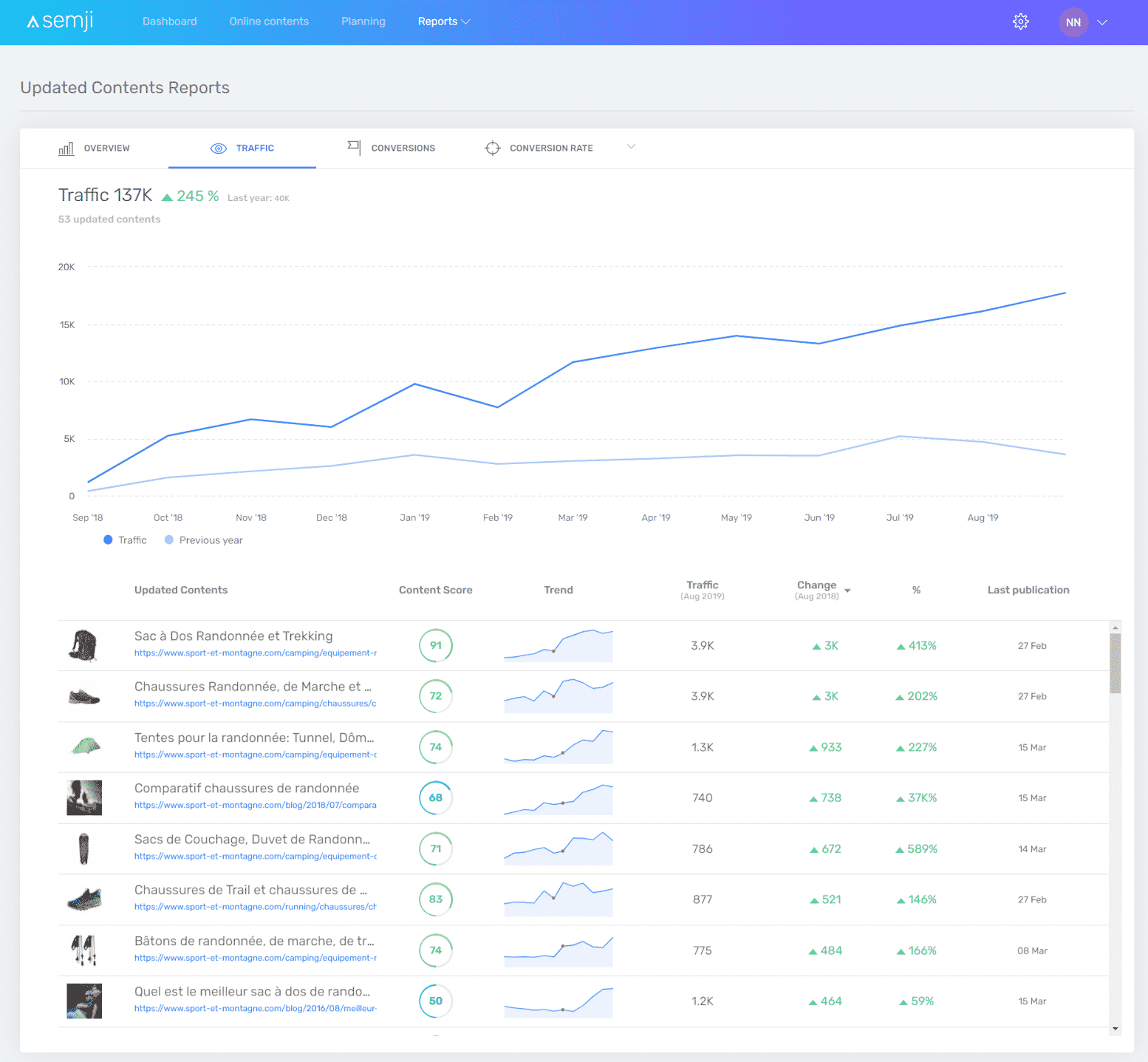
A tool like Semji provides you with a comprehensive view of the results generated by your content. From your different data sources (Google Search Console, Google Analytics, Google Ads, AT Analytics), the dashboard can show you both the SEO performance of a single piece of content and the overall impact on your website of all the content created and updated with the platform. Traffic, sales, transactions, clicks, average session duration, bounce rate… Semji Platform makes it easy to track all your KPIs.
Other elements to remember from the SEO – Content study
- 55% of teams are trained in SEO, but only 13% are familiar with the term “Answer Engine Optimization” (AEO).
- Companies still invest very little in content: 39% have a budget of 5 to 20K euros and 21% have none.
- 59% of companies put their content online within 24-48 hours of producing it.
Download the full study on
Content Marketing and SEO in 2020

